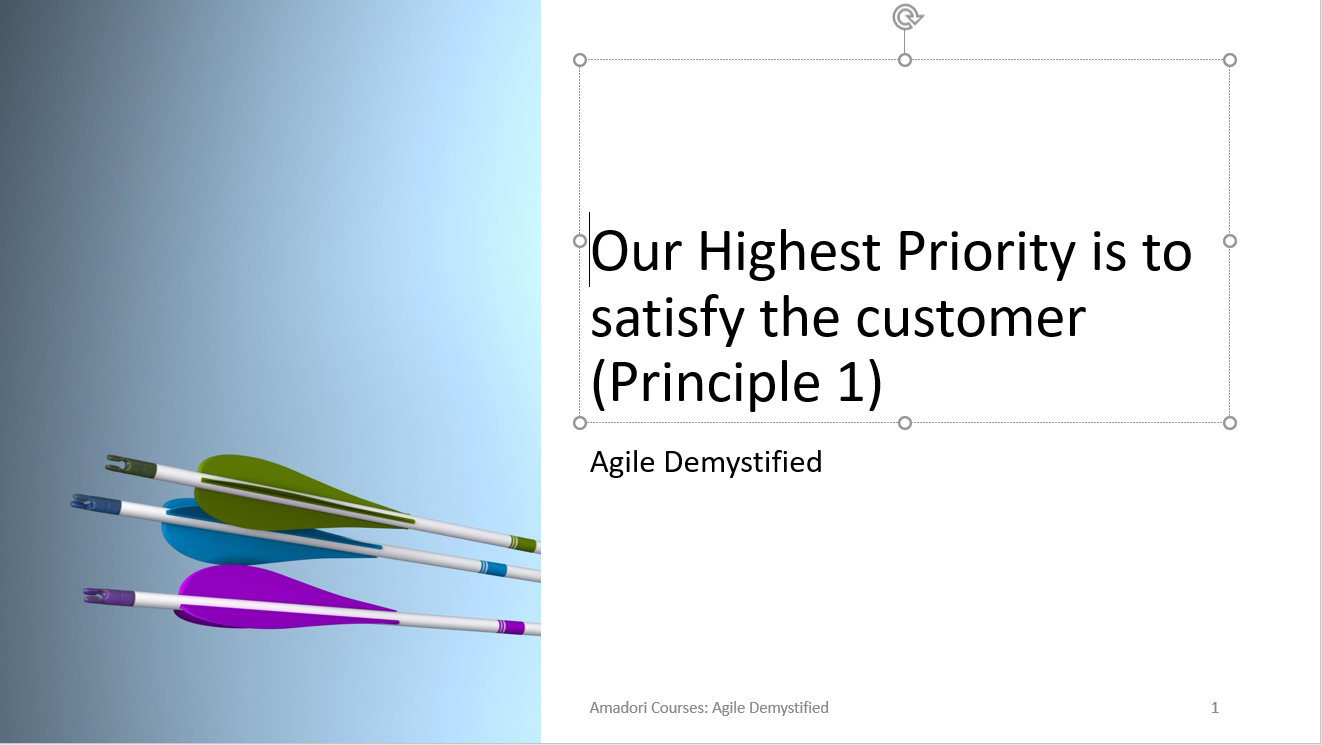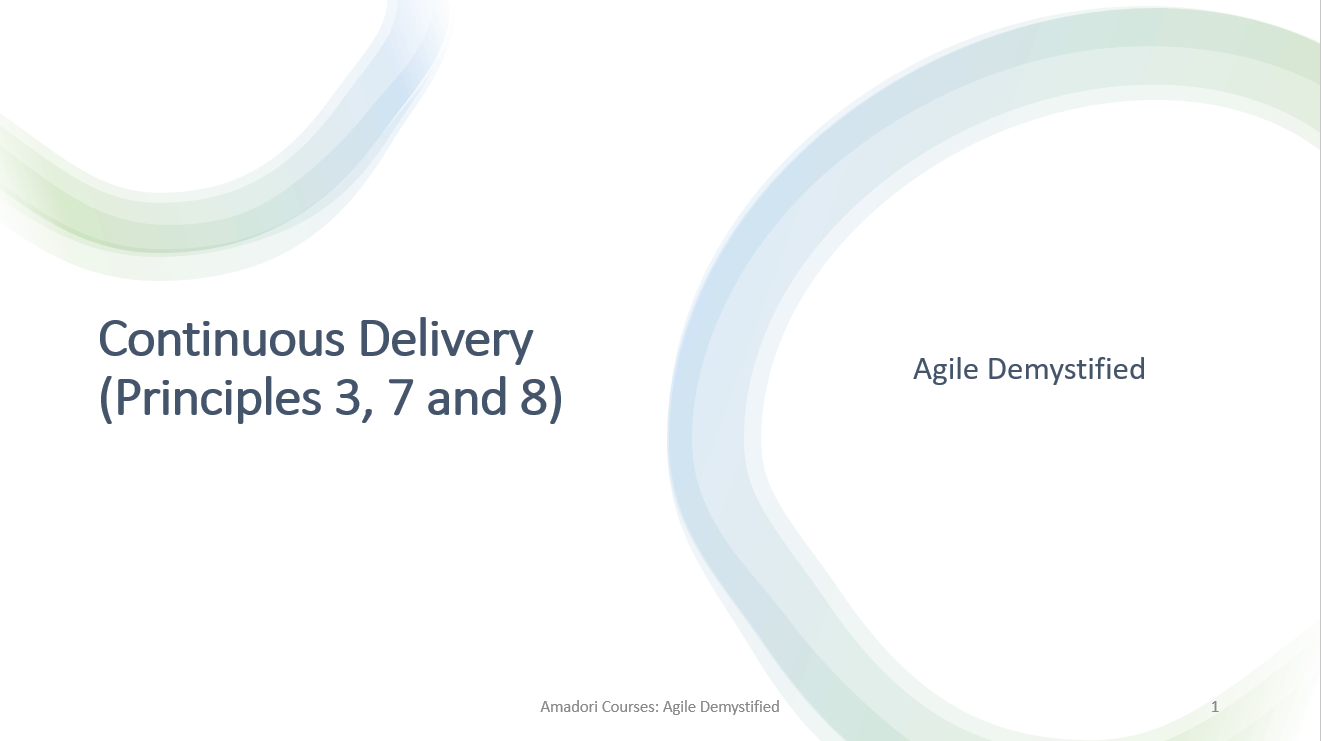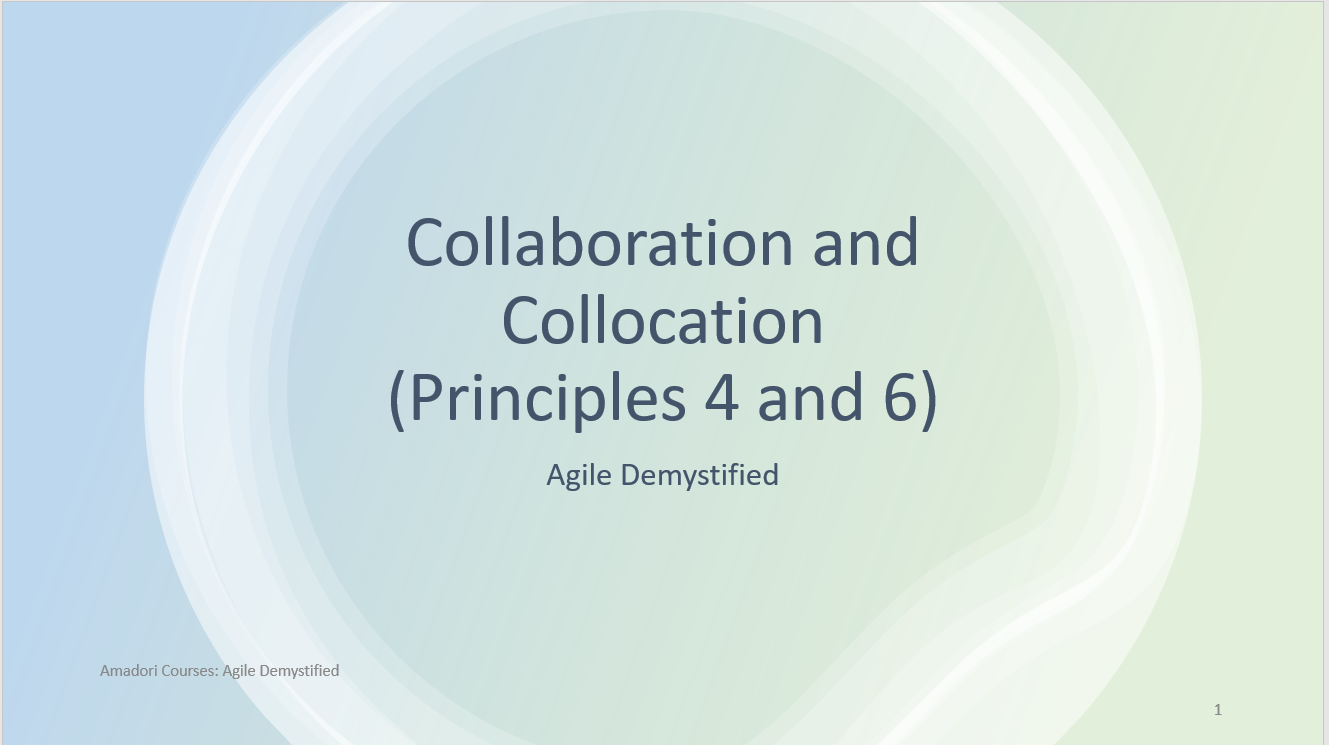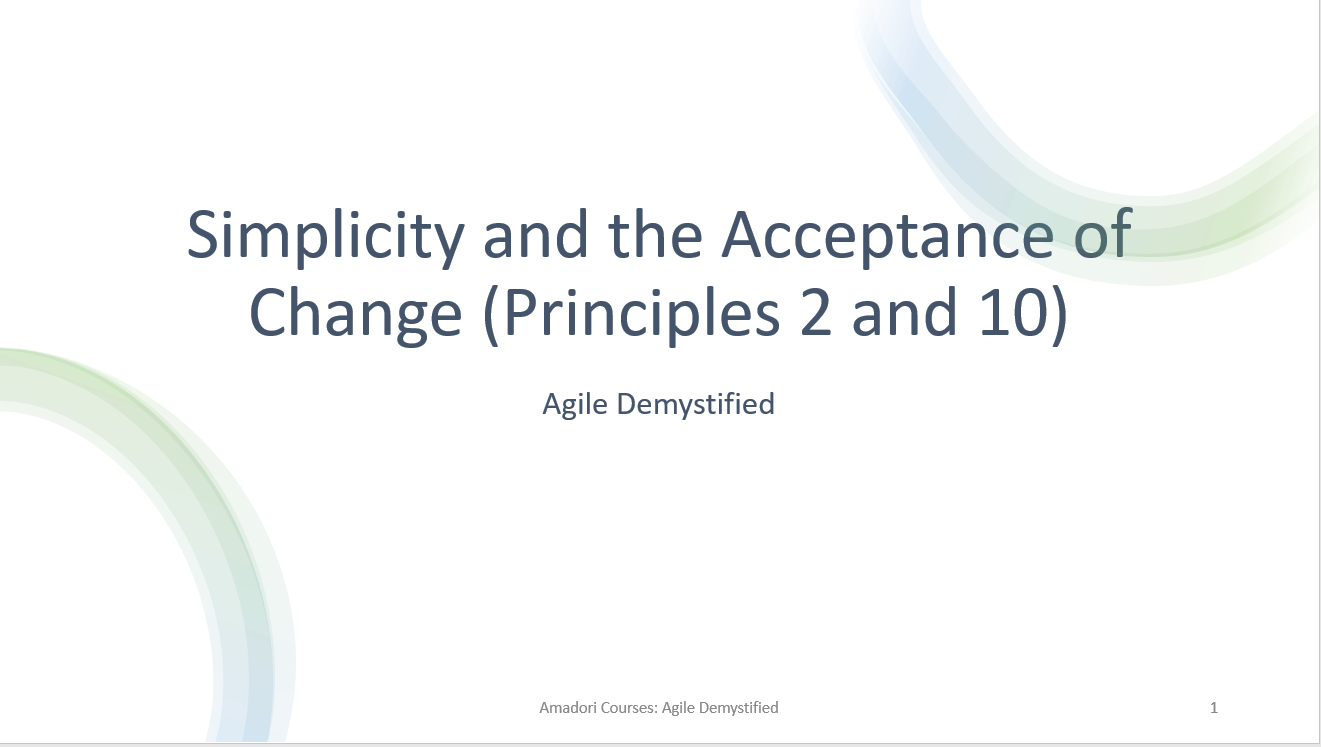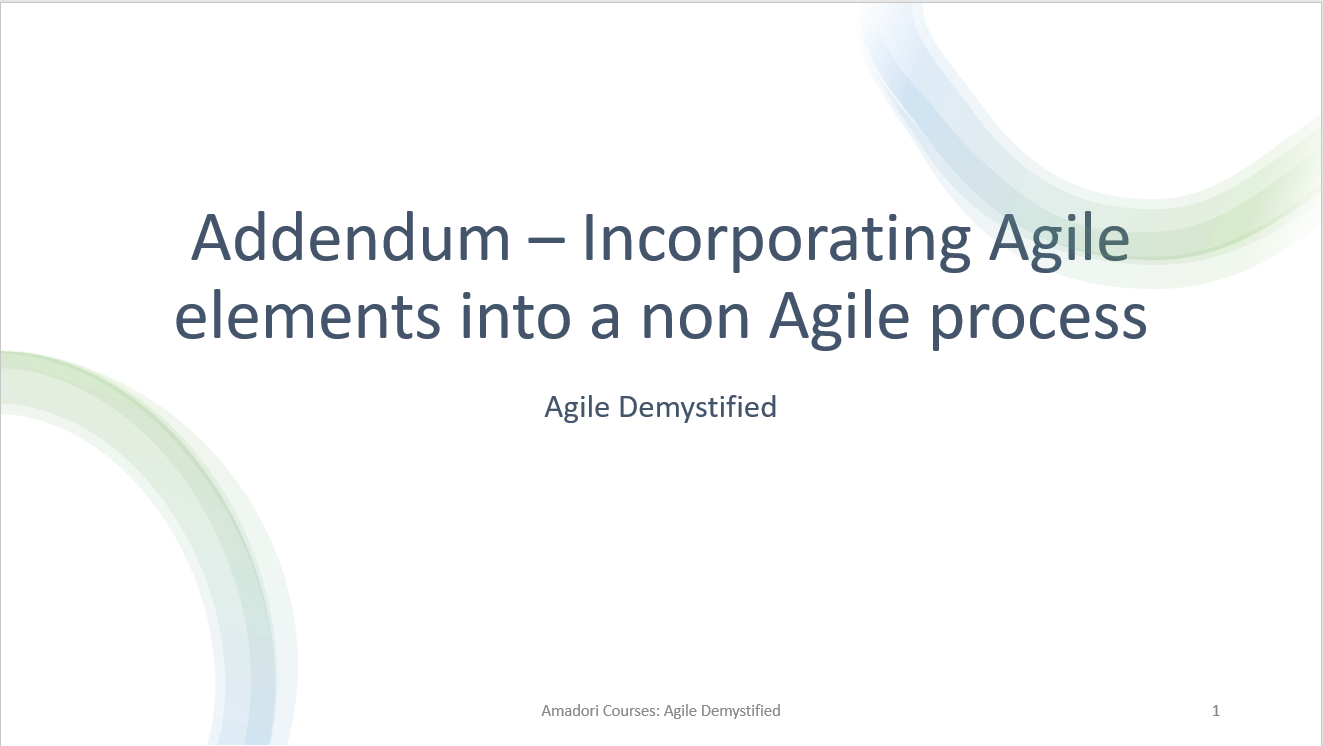
Agile Demystified
Getting to the Root of Software Delivery Issues
Agile Demystified
Overall Course Summary
NEW FEBRUARY 2021: The format of this course has been revised and expanded in the light of user feedback.
Download Course Summary
Many Projects and Organisations claim to follow an “Agile” methodology but on closer inspection are shown to do nothing of the sort
This one-day course aims to
Explain what “AGILE” really means by reference to the ©Agile Manifesto in in which the core principles of the approach are set out
- Examine and dispel common misconceptions about what Agile is and what it isn’t
- Provide advice and guidance as to exactly what is meant by each of 4 Goals and 12 Principles within the Manifesto and how they must all work together if a truly Agile process is to be implemented
- NEW Provide attendees with a questionnaire by which they can objectively determine for themselves whether their Project/Organisation is ready to implement Agile
- NEW Clarify which elements of the Agile process can be employed to improve even non-Agile projects and which the elements of Agile which when combined with a non-Agile process usually end in disaster.
The course is aimed at Senior Stakeholders and/or Senior IT managers who are either
- thinking of implementing Agile processes for the first time
- are experiencing issues deriving the benefits they expected from their existing Agile process
Session
Description
Training Material
- Provides an overview of the whole course.
- The course will begin by reviewing common misconceptions about the Agile Methodology and how this have led to the methodology being incorrectly applied by many organisations and projects
- I will also explain that, to use a culinary analogy, the Agile Process must be viewed as a fixed menu and not a buffet from which diners can pick or choose dishes as they see fit
- I will then review the 4 Goals and 12 Principles of the Agile Manifesto in more detail explaining the purpose of each and how they interrelate to one another
- Next I will introduce participants to an Agile Questionnaire which allows participants to apply their knowledge of the detail of Agile to determine whether their Project/Organisation is ready to adopt Agile processes
- Finally for those who are interested I examine which of the elements within the Agile methodology process can be safely combined with a non-agile delivery process and which cannot.
- This session explains how the Agile Manifesto provides a clear and simple method of determining if a processor organisation is truly agile
- It will introduce participants to the 4 Goals and 12 principles which make up the Manifesto and explain how these individual elements will be covered during the remainder of the course
- It will also try and debunk some of the most common misconceptions as to exactly what Agile is and what it is not
- The Agile Manifesto contains 4 goals which exist to place the detail of its 12 principles into context
- This session looks at each of the 4 goals in detail explaining what the true purpose of each is and how each is designed to work together with the other Goals to deliver Agile
- Many attempts to introduce Agile fail because people have only partially understood or applied what is set out in the 4 Goals so this session will also highlight the most common misconceptions in this area
- The most important principle of the 12 and perhaps the most commonly misunderstood
- In this session we will explore exactly what this principle means, why it is the most important and also try and understand why the second half of the principle often does not get the attention it deserves
- In this session we will discuss
- Exactly what is meant by continuous delivery
- Why this is seen as so important by the authors of the Agile Manifesto
- Ways in which your project/organisation could move towards continuous delivery
- This session will explain how each of these 2 principles reinforces the other showing
- 1. Why both are critical to delivering a truly agile process
- 2. What generally happens if you try and implement “Agile” without either of these two principles being properly adhered to
- The 12 principles are NOT a step by step guide which organisations can follow in order to deliver Agile
- They aim instead to promote a mindset which helps organisations deliver high quality software.
- Agile processes will only flourish in an environment which has been designed to support and encourage them and this session will discuss how these 4 principles can assist in building such an environment.
- By the end of this session it will be clear that in almost every case, that for Agile processes to succeed it must be a change which is introduced across the organisation as a whole and not just within the IT department
- Responsiveness to change is perhaps Agile’s greatest selling point and this session will review how when properly implemented these principles will make an organisation better able to cope with change.
- It will also highlight that the failure of “Agile” organisations to deal well with change is almost always the result of either a failure to understand these principles or an unwillingness to implement them as the authors of the Agile Manifesto intend
- This session introduces participants to a questionnaire designed to measure whether their organisation or project would be a suitable candidate for agile processes.
- Not only will the questionnaire help provide an objective method for making the decision it will also highlight plenty of evidence from the client’s own organisation to support the decision taken
- This session looks in detail at the questions asked by the questionnaire against each of the 12 principles and provides guidance as to what individual’s responses mean in terms of suitability for Agile
- This session looks in detail at the questions asked by the questionnaire against each of the 12 principles and provides guidance as to what individual’s responses mean in terms of suitability for Agile
- This session looks in detail at the questions asked by the questionnaire against each of the 12 principles and provides guidance as to what individual’s responses mean in terms of suitability for Agile



